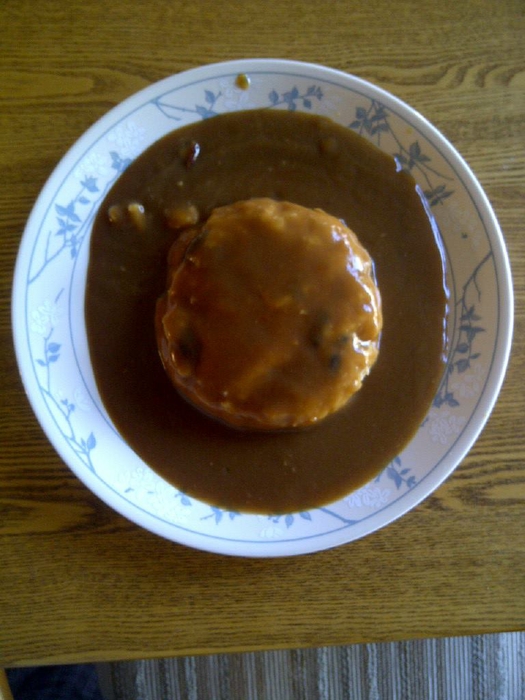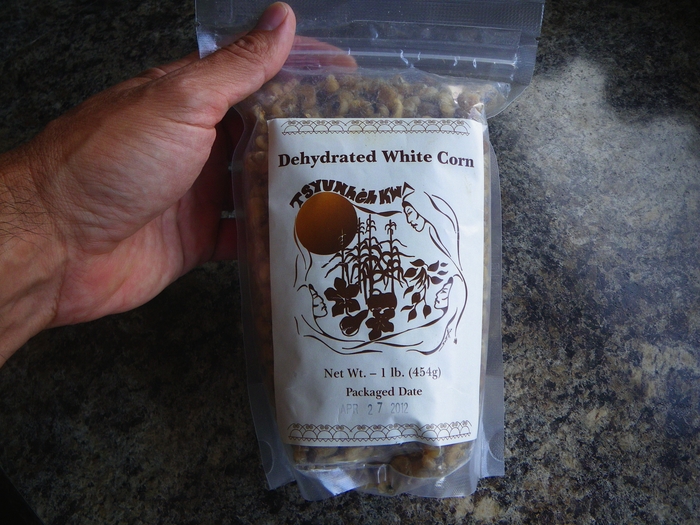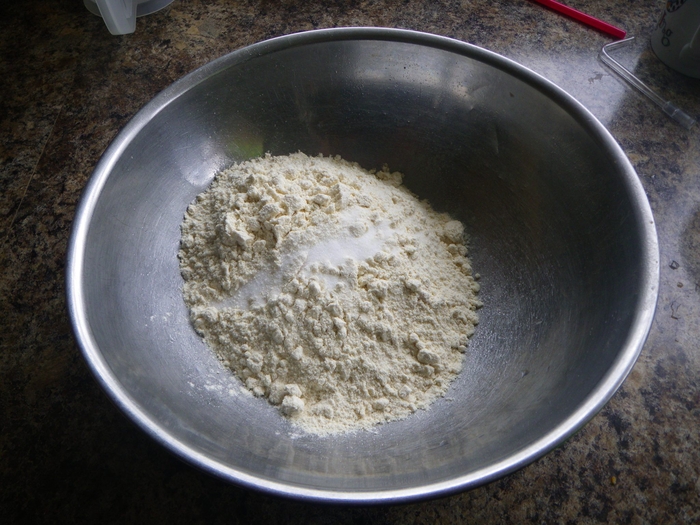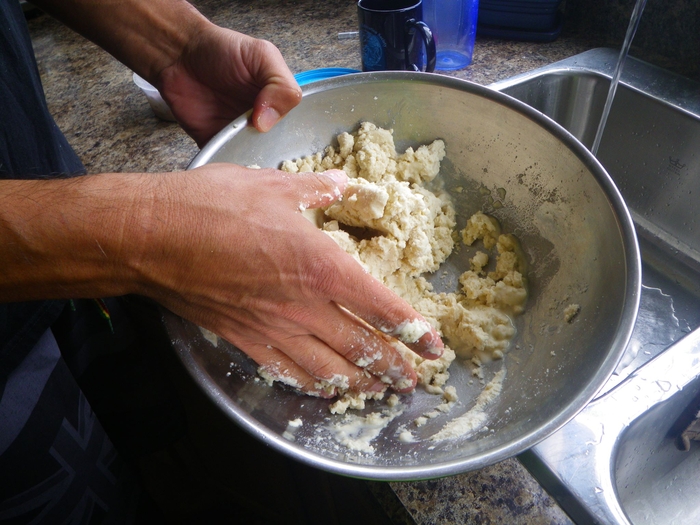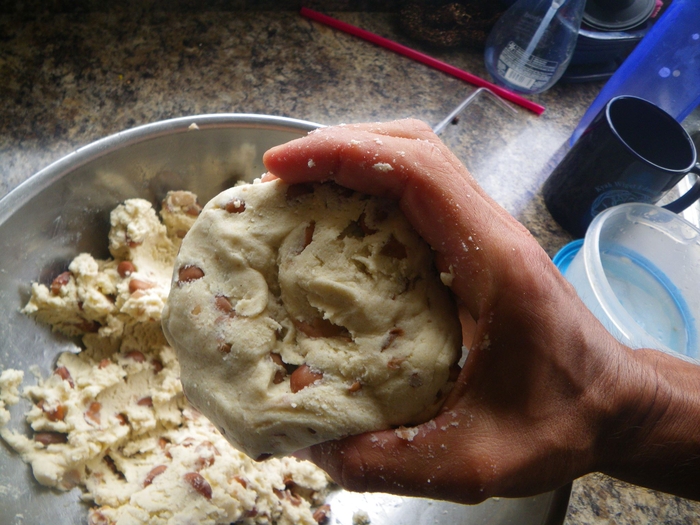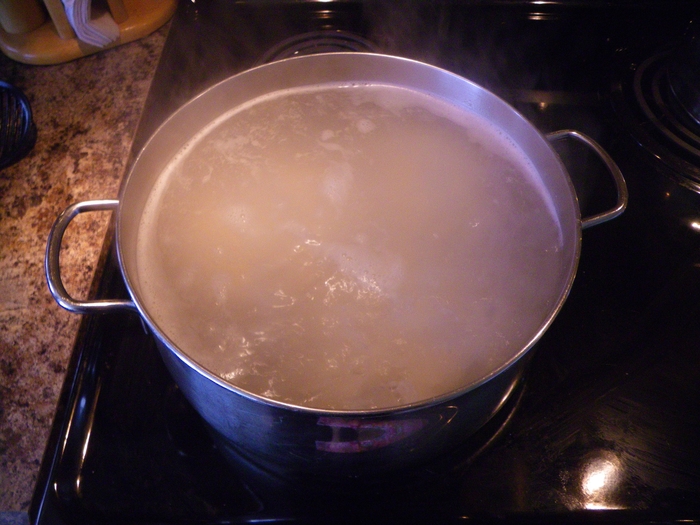Article body
To Iroquois people, corn, beans and squash, are The Three Sisters, traditionally called “the life givers.” For thousands of years, our existence as nations and our whole being as people in this land were intertwined with these sacred plants. Our people grew and used 60 varieties of beans, Onenkwénhtara nikasahe’tò:ten. We had many different kinds of Onon'ónsera, squashes. And there were hundreds of varieties of corn, Ó:nenhste, grown and used by our people, including come that are widely know today like sweet corn, Tekontero:niaks, and popcorn, Watenenhstatákwas. Especially important for our people is Onenhakén:ra, white corn, the ancient seed of our culture carried by our ancient ancestors on their long journey up from the middle south to the continent’s great north eastern forests. As much as the Indigenous people of Mesoamerica, we Iroquois are people of the corn.
The way our ancestors cultivated these plants was a sacred practice of their worldview. Corn and bean seeds were planted together in small mounds of dirt, corn first, in the middle, the beans a little later and around the edges of the mound – a metaphoric enactment of the life giving gifts’ emergence from the breasts of the first woman, our mother the earth, lain upon the back of the great turtle, A'nó:wara. The ground between them was shaded and its moisture protected by the fast growing vines of the squashes that had been planted between the mounds. This was the way of the Iroquois people for thousands of years in the valley of Kaniatarowanèn:ne, the great flowing majesty now called the St. Lawrence River, and in the other places throughout the northeast that our people lived before modern times. The basic food of ancestors was simple but complete nutritionally: hulled corn and beans, squashes, river fish and deer meat.
We still have a connection to this way of life, in spite of changes to our foodways, some chosen and some imposed on us through forced acculturation and as a result of losses due to the degrading of the natural environment. For example, Kanen'stóhare, corn soup, is still a staple for many of our people and is always made and enjoyed on special occasions. Yet today’s corn soup shows just how much our food culture has changed since Europeans came to this land. In 1640 one of the first Europeans to live with our people, a Jesuit missionary, was disappointed to find that the only thing he was fed, and the only thing our people apparently ate, was a soup made of crushed corn seasoned with smoked fish. If you go to Kahnawake or any other Iroquois community today, you will not find smoked fish in your corn soup. Move your spoon around in the bowl though and you will see among the white hominy kernels and red beans some cabbage, and most likely a piece of salt pork or chunk of a ham hock in there. In Kahnawake French foodways have influenced our own – how could they not? And, pig has totally colonized fish and wild meat’s former place on the Mohawk palette. A typical Kahnawake Mohawk corn soup today is made using white hominy corn, sometimes locally grown but mostly canned hominy from the United States or Mexico, salt pork or ham hocks, cabbage or turnips, and salt and pepper. There are different ways of making it between families and different Iroquois communities, of course. Western New York Senecas don’t use anything but corn and people in the southern Ontario community of Six Nations add butter to the soup as well.
Corn soup has its place in our culture. But it is cornbread, Kana’tarokhón:we, the real food, that is still our traditional staple and main connection to our ancestral food ways.
One sign of cornbread’s importance to our people culturally is its continuing symbolic role in ceremony. In traditional Iroquois weddings, for example, the woman’s family makes cornbread and it is given to the men’s family to be cut up and shared with the guests. This is still done today. In the old days, the woman’s family brought cornbread to the man’s grandmother and left it in a black ash woven basket outside her door. If Tóta, or the grandmother, didn’t approve of the marriage, the cornbread was left untouched. If Tóta accepted the gift it meant the marriage was agreed to, and then the man’s family would reciprocate by bringing a basket of meat for the wedding feast to the woman’s family. These practices have changed somewhat now and are slightly different, but the ceremony is still basically the same and cornbread is still at its heart as the original food and as the symbol of the unification of families. And it is still made in exactly the same way.
Sunday morning in Kahnawake means cornbread and steak. This traditions flows out of our more recent history as a Catholic ironworking community where everybody went to church on Sunday and then got together for a meal as a family afterwards. Sunday mornings were special a generation ago, rare family times, and a kind of ritual of hominess for the ironworkers who would have travelled all the way from New York City on Friday night and who would be leaving their families again as they did every Sunday night to drive back to their jobs and other lives. Today, there are not so many ironworkers left, and hardly anyone goes to church anymore. But there is still cornbread on Sundays. It is really one of the things in our contemporary culture that connects us down through many, many, generations of ancestors and their ways of life.
Figure
Cornbread is usually served with gravy. This is a nice plate of corn bread that any Mohawk would be proud to serve up to his family.
Figure
To make cornbread, you start with dried Iroquois white corn that has been de-husked using a lye bath, or more traditionally, rounds of boiling and washing in a mixture of water and the ashes of burned hardwood.
Figure
In recent years Iroquois people have started to revise old foodways and some have begun to market their products as well. There are now a number of brands of Iroquois white corn in various forms that are commercially available. This is corn from the Oneida Nation in southern Ontario.
Figure
People definitely prefer to use hand-prepared corn meal – whether grown or purchased – but the reality for most people is that it takes too much land and time to grow and process your own corn, and the Iroquois commercial products are in short supply and expensive. It is a real challenge to keep yourself supplied with the real stuff, so most people use a non-Iroquois commercial product that is readily available and affordable: the Mexican white corn flour, Maseca, the same ground corn flour used to make tortillas and tamales. The taste is very similar to the real Iroquois ground corn, though the texture is much different. If you want to eat really good cornbread often, you’ll have to grow your own corn, husk it, have some aunties come over and braid it for drying, wash the corn in hickory ashes and then dry it again. But if you don’t have the time or can’t do all that, then you have to use Masa.
Figure
The second ingredient in cornbread is beans, specifically red kidney beans. There are people in Kahnawake who are avid gardeners and grow ancient varieties of beans still, more so than corn even, but as with corn, a canned commercial product is most often used. This isn’t seen to be as much of a concession to modernity as using Masa though, because the taste and texture of canned red beans doesn’t differ all that much from when you use home grown and dried beans.
Figure
On a personal note, for my own cornbread, I usually use organic pinto beans instead. This photo shows how they should be prepared when cooking them from dried: fully cooked but still firm.
Figure
To make the cornbread, you start with just the ground corn. If I am using Masa, I will add some coarser ground corn meal, like grits, to give some texture to the corn bread, and a bit of salt. This use of salt in cooking is something that has changed drastically over the years. Generations ago, our people didn’t use salt at all, something noted as remarkable by the first Frenchmen who came up the St. Lawrence River into Mohawk territory. This was by choice too, because salt did exist naturally in the territory and was also obviously available by trade for use. Wahta, maple syrup, crystallized or lightly boiled to thicken soups, was used instead of salt for flavouring. It didn’t take long though for the French to impart their taste for salt on our people – by the mid-1700s Iroquois were using salt in their cooking too. It is used as extensively in Kahnawake as anywhere else these days.
Figure
You start the mixing by making a trench or hollow in the meal or flour and then add water a little at a time until there is just enough to make a firm paste. Some people use boiling water, but I prefer lukewarm water.
Figure
Next, you knead the wet paste with your hands. At this point, the beans are added to the mixture. Sometimes when I want to have a sweet tasting cornbread to eat with Wahta, I use dried blueberries instead of beans. Once the mixture sticks to the side of the mixing bowl and holds together, you take a palm-sized ball and press it together, back and forth between your hands, moving the corn bread in a circle motion, just like making a big hamburger patty.
Figure
The bread will start to firm up, and then you can form it into shape by rounding the edges with your palms and pressing down on the flat part with your fingers and thumbs. This is really the only part of making corn bread that calls for technique.
Figure
Cornbread always has the same basic shape, but it can vary in size depending on where you are in Iroquoia. In Kahnawake, cornbread is around two inches thick and six inches wide, and it is very important to make the corn bread right of people will laugh and mock your misshapen loaf.
Figure
Once the cornbread is made into loaves, they should be cooked right away. Cooking is simple, but doing it right is all a matter of timing. You put the loaves into a pot of boiling water big enough to allow the loaves to move around in the roiling water. Then you leave the loaves to cook, turning and rotating them as needed so they don’t stick to each other or the pot.
Figure
When the cornbread floats it is done. With a small batch, it could take as little as ten minutes. But it could take longer, and the floating of the loaves is the only reliable sign that the corn bread is ready.
Figure
People who are not Iroquois tend to find the taste of cornbread bland. Being raised on it, I may be biased, but even though I don’t think of cornbread as the “ambrosia of the gods” as some of my cousins do, I do find it has a subtle and simply delicious taste and that the texture is satisfying. People find it bland, I suppose, because they are usually fed day-old reheated corn bread that has lost its flavour and proper texture, and there is no denying that it is a dish best served straight out of the pot when it is often, depending on the corn used, fantastic. Old corn bread is best cut into pieces and pan fried and eaten like a pancake with syrup.
Figure
This is my cousin Deron’s cornbread, made the traditional way with hand ground white corn meal instead of Masa. Notice the difference in surface texture from the corn bread made with Masa.
There are lots of people in Kahnawake who still make their own cornbread every Sunday, but it is just as common for families to make a social occasion out of the meal and many of us go out for cornbread and steak on Sundays at one of Kahnawake’s restaurants. My own family’s restaurant, Rabaska, before it was lost in a fire a few years ago, was the place for cornbread and steak on Sunday for 30 years, in house or delivered. I can still remember my aunties, uncle and grandmother making hundreds of cornbreads every Saturday to get ready for the Sunday morning rush. Here are some examples of the dishes served at the more popular places in town these days…
Figure
Figure
Figure
Linda Hemlock, a First Nations woman originally from British Columbia, has learned the ways of the cornbread well. The restaurant she runs with her husband, The Water Drum, is a popular place to get cornbread and steak, especially in the summer months when you can sit on her terrace, which has a great view of the river and the city in the distance.
Figure
Figure
Dustin’s is another place in Kahnawake that makes really good cornbread. Iawekon… My parents like to get cornbread from Dustin's and eat it at home. This is my son Kai at his Tóta’s kitchen table, obviously enjoying being Mohawk!
Appendices
Biographical note
Taiaiake Alfred is a Mohawk writer and professor born in Montréal in 1964. He was educated in history and political science at Concordia and Cornell universities. Taiaiake currently divides his time between the Kahnawake Mohawk Territory and British Columbia, where he is Director of the University of Victoria’s Indigenous Governance Program.
Appendices
Note biographique
Taiaike Alfred est un professeur et écrivain mohawk né à Montréal en 1964. Il a reçu une formation en histoire, mais aussi en sciences politiques, aux universités Concordia et Cornell. Taiaike partage actuellement son temps entre la réserve mohawk de Kahnawake et la Colombie-Britannique, là où il est directeur du programme de gouvernance autochtone de l’Université Victoria.
List of figures
Figure
Figure
Figure
Figure
Figure
Figure
Figure
Figure
Figure
Figure
Figure
Figure
Figure
Figure
Figure
Figure
Figure
Figure
Figure
Figure



